In this guide, we’ll offer an easy, step-by-step guide on how to change gear in an automatic car, from the traditional automatic, to the modern. Let’s start with the basics. Those of us that drive an automatic car are familiar with the standard PRND at the gear selector lever. PRND stands for Park, Reverse, Neutral and Drive. If you have an ‘S’ on your automatic gear selector, it stands for ‘Sport Mode’.
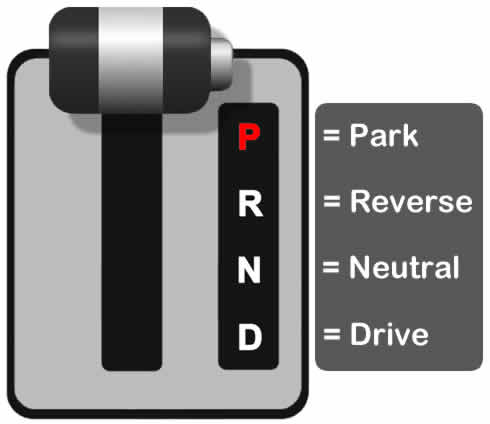
Park
Park locks the transmission and is an additional safety feature along with the parking brake to prevent the vehicle from rolling when unattended. Always ensure the vehicle comes to a complete stop before selecting Park, else you may damage the gearbox. See when to use Park in an automatic car for further information.
Reverse
If your car is moving forward, always ensure you use the footbrake to bring the vehicle to a complete stop before selecting reverse, else you’ll be using the vehicle’s transmission to stop the vehicle rather than the brakes. This may cause damage to the transmission.
Neutral
Neutral has no gears engaged and unlike Park, Neutral does not lock the transmission. You should select neutral if your car needs towing or if you need to push it. Some drivers select Neutral whilst driving to save fuel and this is called ‘coasting’. Whilst it doesn’t damage the gearbox, coasting is not recommended and it reduces your control of the vehicle. For further information, see why do automatic cars have neutral?
Drive
Before selecting Drive, always depress the footbrake first. This will ensure that the car’s creep function will not make the car jerk forwards. You can generally keep the car in Drive, with your foot firmly on the footbrake when stopped in traffic. This does not cause the transmission any harm. If you are stopped in traffic for a longer period of time than usual, you can select neutral and apply the parking brake. This also helps to reduce brake light glare (particularly at night) for the occupants of the following vehicle.
Manually Changing Gears in an Automatic Car
Most of us simply keep the gear selector lever in Drive (D) and let the transmission choose the appropriate gear. Modern automatic cars use sensors that relay information to a computer, which in turn determines the appropriate gear for any given situation. In general, the computer makes the correct choice, but not always.
As automatic cars have progressed, they began offering the driver greater control by allowing the ability to manually change gears (see why do automatic cars have a manual option). Along with the PRND, there can be various letters, numbers and symbols and these vary depending on the model of automatic car. To some, this can be a little daunting, particularly of you’re not sure what the letters, numbers or symbols mean or when to use them.
How to Change Gears in a Traditional Automatic
Traditional automatics with a manual option has the standard PRND and then numbers such as 321 (PRND321). The numbers represent the manual gears that can be selected. Some automatic cars may have fewer manual gear options such as PRND21.
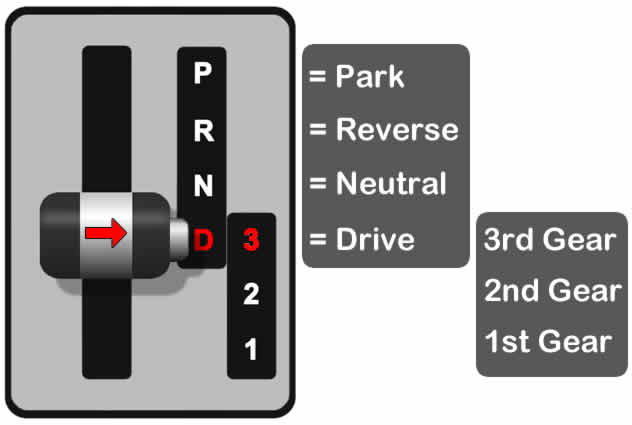
Older automatic cars only have 4 or 5 automatic forward gears that are available for the transmission to use when in Drive. You can use the manual gears to lock in lowers gears to prevent the transmission from shifting up gears.
Whilst moving along in Drive, you can push the gear selector lever to the right (or left depending on which side of the road you drive on) to select the manual gears.
3rd Gear
An automatic car’s 3rd gear is ideal for overtaking or for towing a heavy load. This gives the engine more power, but at a slower speed, or will allow for better acceleration for overtaking (see automatic kickdown below). You can change into 3rd gear from between 25 to 35 mph, though each vehicle will be a little different. If after changing the engine revs are too high, slow down a little.
2nd Gear
You may find an automatic car’s 2nd gear ideal for traveling down a steep slope. Typically, an automatic car will change up gears as speed increases, locking the gear into 2nd means you can use engine braking along with the footbrakes to keep the car’s speed slow. This will help to reduce brake fade.
Another use for 2nd gear is to move off from a stationary position on an icy road. This varies for car, but you may find it helps to maintain traction. You should be traveling no faster than 15 to 25 mph before shifting into 2nd gear. If after changing the engine revs are too high, slow down a little.
1st Gear
If you need to travel very slowly and do not want the engine to change up a gear, then 1st gear is ideal. It’s important that you only change into 1st gear when the car is moving at a very slow speed from between 5 to 15 mph.
How to Change Gears in a Modern Automatic
Most modern automatic cars have more gears than the 4 or 5 gears used in a traditional automatic. From between 6 to 9 gears is quite normal for a modern automatic car and because of the many gears, an alternative method for manual gear changing was developed.
More gears means better fuel economy, but with all these gears, using the traditional method of a manual gear shift of PRND87654321 would be impractical, so instead we have the electronic plus (+) and minus (-) lever for manually shifting up and down gears.
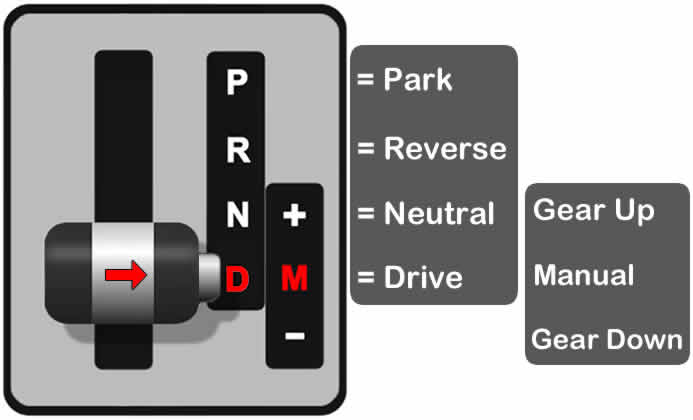
From ‘D’, simply push the gear lever over to ‘M’ (manual) and then you can either push the gear lever towards the + symbol to change up a gear, or down into the – symbol to change down a gear. Once you let go of the gear lever, it will automatically spring back to the centre ‘M’ position.
You can also block gear change if you wish. If for example, you need a lot of engine power and a low gear, you can pull down the lever, twice in quick succession to skip a gear and change into the next lowest one. Once you’ve finished driving in manual mode, simple push the gear shifter back over to ‘D’ to select fully automatic.
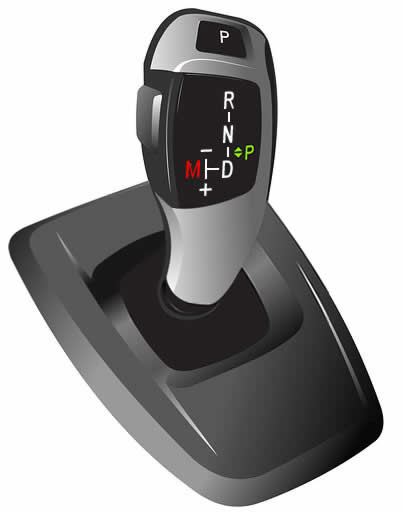
On some modern automatic cars, you may find some or all of the gear shifting options on the lever itself. With these types of gear shifters, you use the lever like a joystick by pushing it up, left, right or down to select your choice.
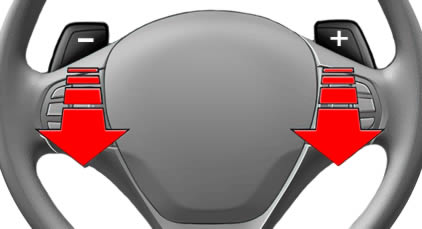
Rather than having the option to change gears using the gear lever, some automatics have paddle shifters located at the steering wheel. The principle is the same, pull the ‘+’ paddle shifter to select a higher gear or pull the ‘-‘ paddle shifter to go to a lower gear. Depending on your model of car, by using a paddle shifter, manual mode will automatically be selected. On most automatics, you can double pull the paddle shifters to block change up or down gears.
Fail-Safe System
Most modern automatics have fail-safe systems to prevent potential damage from occurring while driving in manual mode. For example, when driving in manual mode, if the engine speed is too high, the system may automatically change up a gear, or if you stop the car in manual mode, then the gearbox will automatically change down to 1st gear. This is to prevent the engine from stalling when moving off again.
Kickdown
Kickdown is a feature that’s been available on automatic cars for many years now. The process is simple, press the accelerator all the way to the floor and the gearbox will change down a gear without any need for the driver to operate manual gears. This process provides maximum engine power without over-revving of the engine.
For example, when the driver presses the accelerator to the floor, the gearbox control program may change down one or two gears depending on the engine speed.
If the driver attempts to activate a kickdown but the engine is already running at a high speed, to prevent possible damage to the engine, a down shift may not take place. Once the driver resumes normal operation of the accelerator pedal, the program will change up gears.